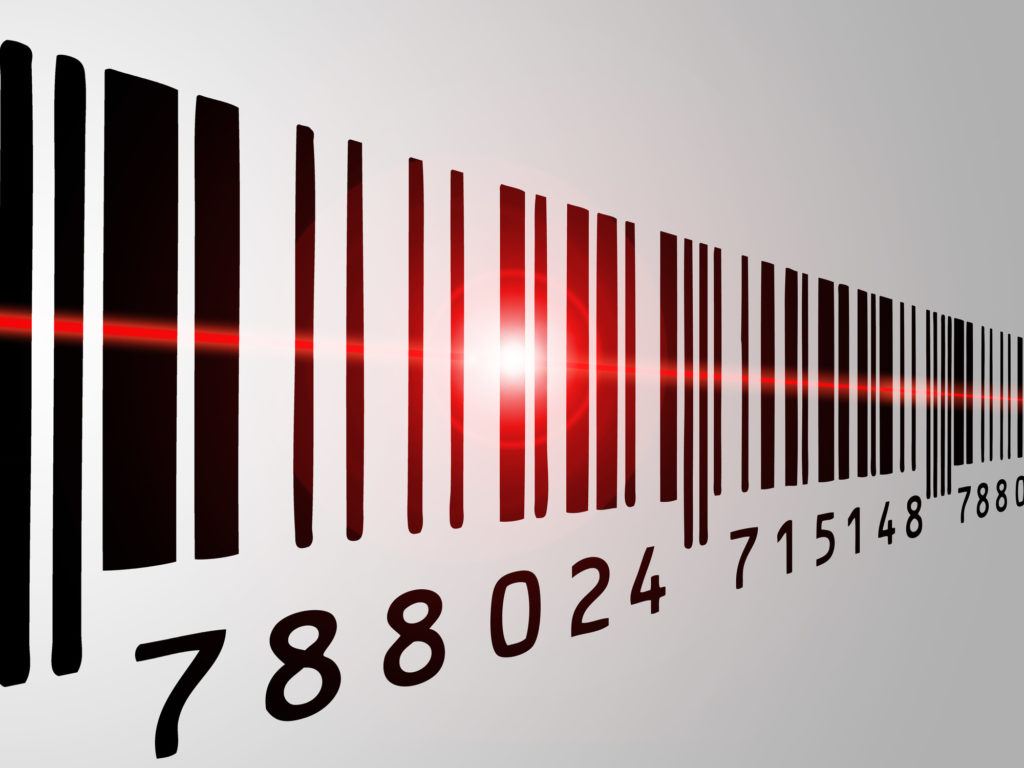
When you buy our groceries, we rarely notice the black and white lines displayed on the side of each product. Everything from the cereal boxes to the dishwashing soap, when you look past the advertising stuff, there’s always a barcode.
Since the introduction of the barcode over 70-years ago, the time it takes to buy things at the store has reduced significantly. The barcode has become a common sign in stores around the world.
But have you ever wondered who invented the barcode and how it works? Keep reading below to find more about the mundane mystery of the barcode.
What is a Barcode?
The barcode is also referred to as a UPC symbol or Universal Product Code. With the use of barcodes, we can label every product in a store. Previously stores would use a price label for each product.
The barcode allows stores to enable customers to purchase items at a quicker and more efficient rate at the checkout counter.
Unless the barcode is damaged, the transaction normally runs smoothly. Sometimes, the UPC number at the bottom of the barcode is required to be entered manually.
All the cashier is required to do is run the item over the barcode scanner to reveal the price of the item. However, even this role is increasingly carried out by the customers themselves with self-service checkouts.
Since 2004, Fortune Magazine predicts over 90 percent of the Fortune 500 Companies use barcodes. Check out this great resource for more on barcodes.
Why is the Barcode Used?
There’s more to the benefits of the barcode than simply improving the speed at which the checkout counter can scan items.
The technology has allowed stores to centralize everything in computerized form. You have a record of the stock levels of every item, how many you have sold and information about the price.
If you want to reduce the price of an item, you don’t have to go around the whole store altering each label. You just change the price on the computer and the system takes care of it.
With the information about stock levels, you don’t have to run out of products as much. If you see the stock levels are low, you can simply make an order for more.
Lastly, you can be confident that if there are items missing from your inventory, they were probably stolen. This can help you to determine which parts of your store and which products are vulnerable to theft.
How Does it Work?
When the barcode is run along the scanner, the scanner reads the bars and spaces displayed on the item.
The scanner transfers the information from the barcode onto the computer. Then, the computer is tasked with finding the information from the product database about the item, such as the price and the number of items left in inventory.
Let’s look at an example. This example includes a simple binary pattern of a black line (which corresponds to 1) and a white line (corresponds to 0).
- The scanner shines the laser (LED) light on the barcode.
- The light from the scanner is reflected by the barcode which is detected by the photoelectric cell in the scanner. The white lines reflect a lot of light, whereas the black lines don’t.
- The scanner generates a code from the information, such as “black black white black black white black black”. This would also mean “off off on off off on off off”.
- The scanner converts the “on-off” signals into 1s and 0s.
- The binary numbers are transferred to the computer in the form of the code 11011011.
Now we know what a barcode is and how it works, let’s dive into the history of the barcode.
Who Invented the Barcode?
To understand the history of the barcode, we need to go back over 70 years ago. In 1948, two American inventors called Bernard Silver and Norman Joseph Woodland came up with the idea of improving checkouts in grocery stores.
The two inventors design a number of marking designs that include a mixture of lines, dot, dashes, and circles. After arriving at the design of the modern-day barcode, they apply for a patent, which they were granted in 1952.
They also developed a scanning system which involved a lamp to shine on the barcode and a photomultiplier. Even though Woodland moved to IBM, the tech company refused to buy his patent. The patent was subsequently bought by Philco in 1951.
Even though a number of different barcodes are developed throughout the 1960s and 70s, the problem for larger food manufacturers and retailers was a lack of standardization.
By 1971, George J. Laurer further develops the barcode invented by Woodland and Silver to develop the Universal Product Code (UPC) we know today. The larger grocery stores, headed by the Universal Code Council (UCC), adopts the UPC as the standard barcode.
What was the First Product to Have a Barcode?
By 1974, Marsh’s Supermarket became the first grocery store in the world to scan a purchase with the barcode scanner. The item was a 10-pack of Wrigley’s chewing gum.
By the 1980s, the barcode became the standard across the world’s grocery stores. Following this success, the inventors Woodland and Silver were inducted into the National Inventors Hall of Fame.
The Future of the Barcode
Now you know all about the history of the barcode, what about the future of the barcode?
The signs are that despite the development of technology that is changing our shopping habits, for now, the barcode is going nowhere.
Would you like to read more articles about the history of a mundane but important technology? Check out our article on everything you didn’t know about the history of modern air conditioning.

